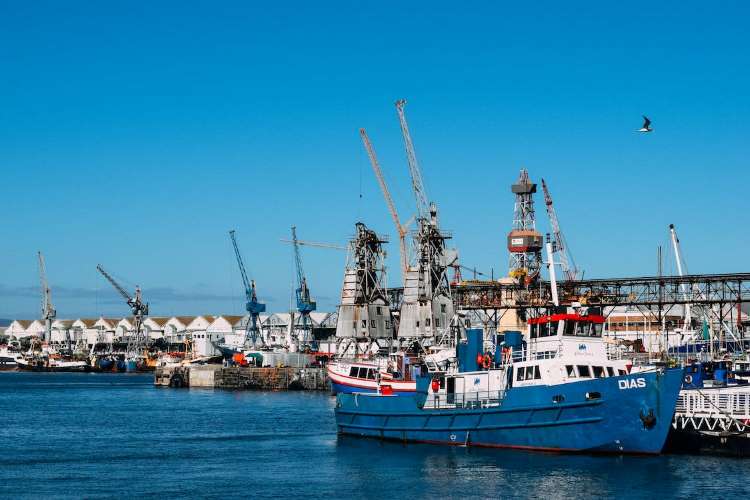
India’s foreign trade in the first half of 2023 demands careful analysis and strategic consideration. The period from January to June saw trade volumes crossing the $800 billion mark, an impressive figure, yet accompanied by complex dynamics that warrants a closer examination. A study by Global Trade Research Initiative sheds light on the nuances of India’s trade performance, highlighting key trends, challenges, and opportunities that lie ahead.
India’s total foreign trade, comprising both exports and imports of merchandise and services, recorded a turnover of $800.6 billion in the first half of 2023. While this marks a commendable achievement, it is important to recognise that this figure represents a 2.5% decline from the same period in 2022. Delving deeper into the numbers, a tale of contrasting performance unfolds.
READ I Trade facilitation data key to improved export performance
Exports: A tale of two segments
Exports grew 1.5% in the first half of 2023 with services driving growth through a substantial increase of 17.7%. This surge in services exports played a crucial role in masking the 8.1% decline in merchandise exports. The contraction of merchandise exports is noteworthy, considering the depreciating rupee which usually supports export competitiveness. During this period, the rupee moved from 76.16 in April 2022 to 82.18 in April 2023.


India’s exports encompass a diverse array of product categories, with some showing positive growth while others face challenges. Notably, 11 out of 29 product categories registered positive export growth, contributing significantly to India’s exports. These categories include telecom, computer and electronics products (35.7%), machinery, boilers, turbines, and parts (2.7%), and pharmaceuticals (4.9%).
This positive trend suggests that initiatives such as the production-linked incentive (PLI) scheme might be bearing fruit. For instance, smartphone exports surged by an impressive 200% from $2.5 billion in the first half of 2022 to $7.5 billion in the same period of 2023. However, the analysis also highlights challenges in various labour-intensive sectors such as textiles, garments and leather product. These sectors experienced negative growth, reflecting the need for targeted policy interventions to bolster their competitiveness.
Foreign trade partnerships, trends
India’s trade relations with its partners reveal both gains and losses. The analysis underscores a decline in India’s merchandise exports to Free Trade Agreement partners which fell by 18.2% during the first half of 2023 compared with the same period in 2022. This decline outpaces the overall merchandise export decline of 8.1%. It is crucial to assess this trend against the backdrop of global geopolitical developments which have a significant impact on trade dynamics.
Interestingly, Russia has emerged as a major player in India’s petroleum crude imports with its share skyrocketing from 6.4% to 31.3% in the first half of 2023. This significant shift in sourcing calls for a comprehensive energy security strategy and diversification of sources to mitigate risks associated with overreliance.
Trade deficit and policy implications
While analysing India’s trade performance, it is imperative to examine trade deficits, as they reflect imbalances in import-export dynamics. A notable insight is that China and Russia are among the top contributors to India’s trade deficit. Addressing these deficits necessitates strategic planning, including boosting domestic production and enhancing export competitiveness. As we navigate the uncertainties of the global trade landscape, several factors warrant attention.
Volatile global trade environment: The World Trade Organisation projects sluggish trade volume growth for 2023 due to various geopolitical and economic factors. The ongoing conflict in Ukraine, high inflation, and monetary tightening create a challenging backdrop for global trade. Additionally, the proliferation of subsidies and protectionist measures by key players, including the EU and the US, adds further complexity.
Strategic focus on quality and competitiveness: In light of these challenges, India should prioritise improving product quality and enhancing supply chain competitiveness. Maintaining a robust focus on these aspects will position India favourably in the global market, enabling it to weather fluctuations and capitalize on opportunities.
Navigating trade relations: Given the inward-focused policies of major economies, India must tread carefully in its trade relations. A steadfast commitment to safeguarding policy space and protecting national interests is essential. This includes responding effectively to unilateral measures such as the EU’s deforestation regulation or the Carbon Border Adjustment Mechanism of the US.
Leveraging new trade initiatives: India’s trade strategy should adapt to changing dynamics by leveraging new initiatives like the PLI schemes. These programmes have shown promising results, especially in sectors where India historically lagged behind. Continued support and refinement of such initiatives can contribute significantly to export growth.
Diversifying energy sources: The substantial increase in Russia’s share of India’s petroleum crude imports highlights the urgency of diversification. A comprehensive energy security strategy, including partnerships with various suppliers and investment in renewable energy, can mitigate risks associated with relying heavily on a single source.
India’s foreign trade in the first half of 2023 is a blend of successes and challenges, reflecting the intricate interplay of global dynamics. While there are positive trends in services and select merchandise categories, there are also areas requiring immediate attention, such as labour-intensive sectors. As the global trade environment continues to evolve, India’s policy decisions must strike a balance between protecting domestic interests and engaging with the international community.
The road ahead demands a proactive approach, focused on enhancing competitiveness, diversifying trade partners, and safeguarding against the uncertainties that mark today’s global trade landscape. By embracing these strategies, India can steer its foreign trade towards sustainable growth and secure its position as a significant player in the global marketplace.
Anil Nair is Founder and Editor, Policy Circle.

